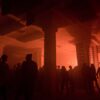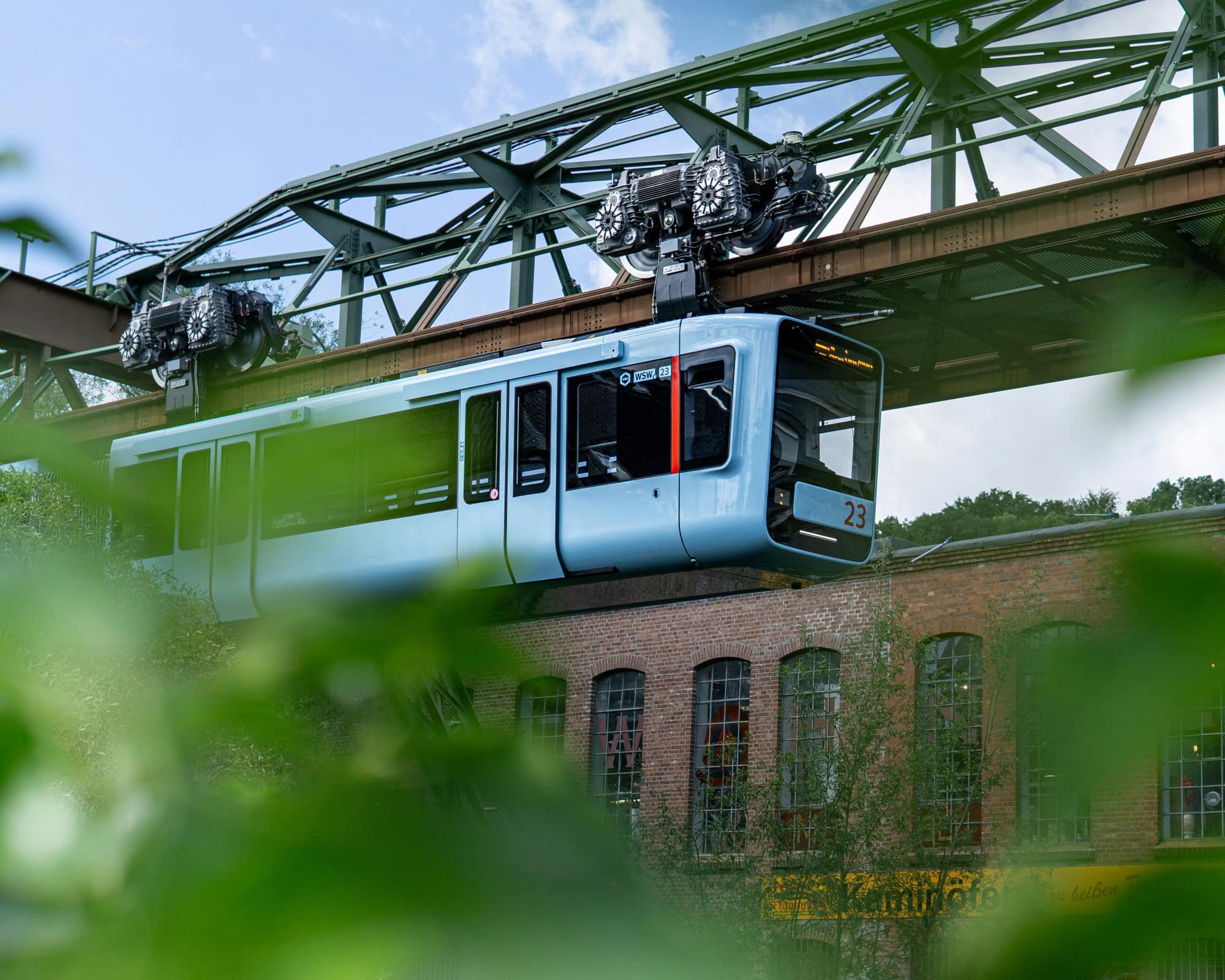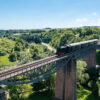Wuppertal is not a classic beauty. But if you take a closer look in the former textile city, you will discover all sorts of cool places, fantastic views and innovative people. Between street art and industrial charm, we show you 11 great things to do in Wuppertal.
Climbing the stairs – Holsteiner stairs
Wuppertal is notorious for its stairs. The city, which stretches across the long Wupper valley with steep slopes on both sides of the river is teaming with the stone steps. Brightly colored like the Holsteiner stairs or winding and with cute names like Tippen-Tappen-Tönchen: Wuppertal’s stairs, which sometimes demand a lot from visitors, are just as much a part of the city as its suspension railway. And they also offer great photo opportunities!
Tip: If you like street art, you should definitely check out the bridge on the Schwesternstraße, which the graffiti artist, Megx, has transformed into a colorful piece of Lego brick artwork.
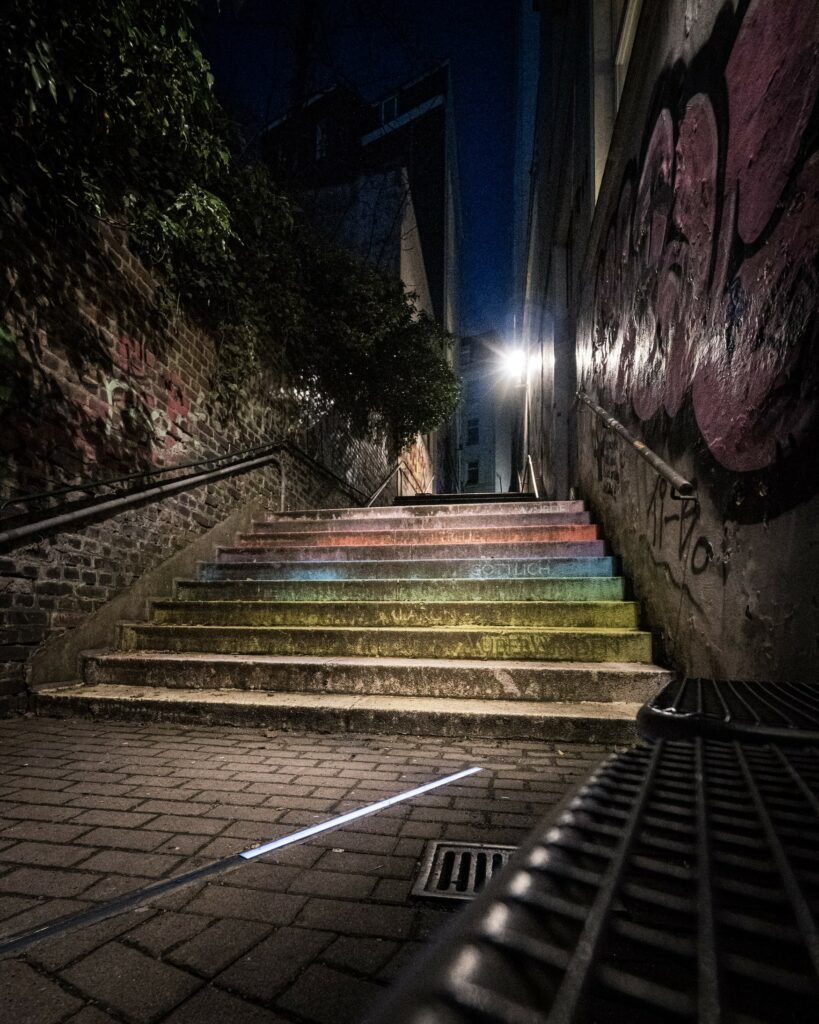
Enjoy the views – Die Hardt
The steep slopes in Wuppertal offer magnificent views far across the valley at every corner. It is particularly beautiful at the Hardt – the oldest city park in Germany on a small hill overlooking the city. Various observation towers such as the beautiful Elisenturm or the rustic Bismarckturm provide a view as far as Düsseldorf and are also a feast for the eyes in their own right. The Hardt grounds invite you to take a long walk through the green, and exotic plants from all over the world bloom in the botanical garden in spring. The cozy Café Elise is the perfect place for coffee and cake and is also worth a visit for brunch.
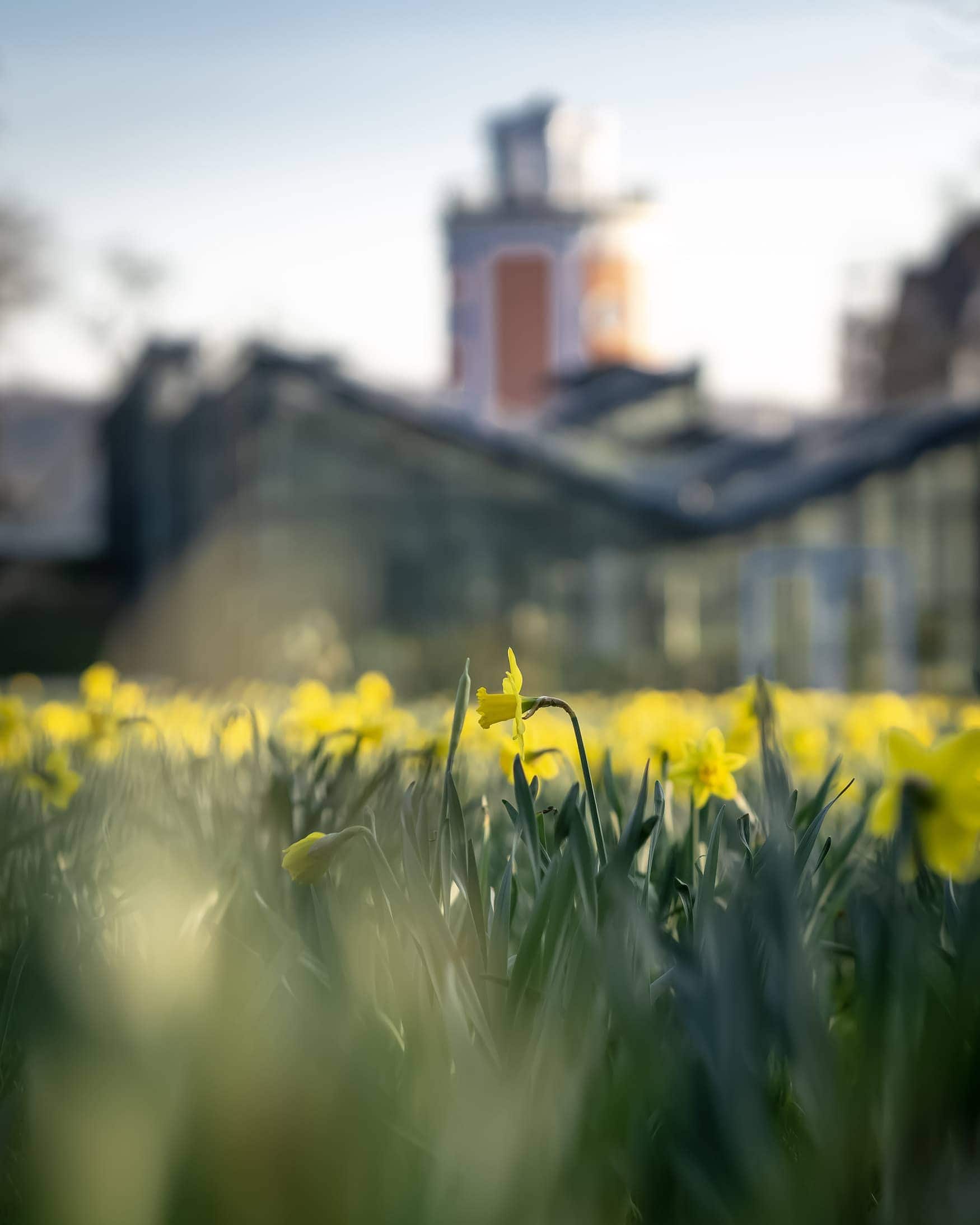
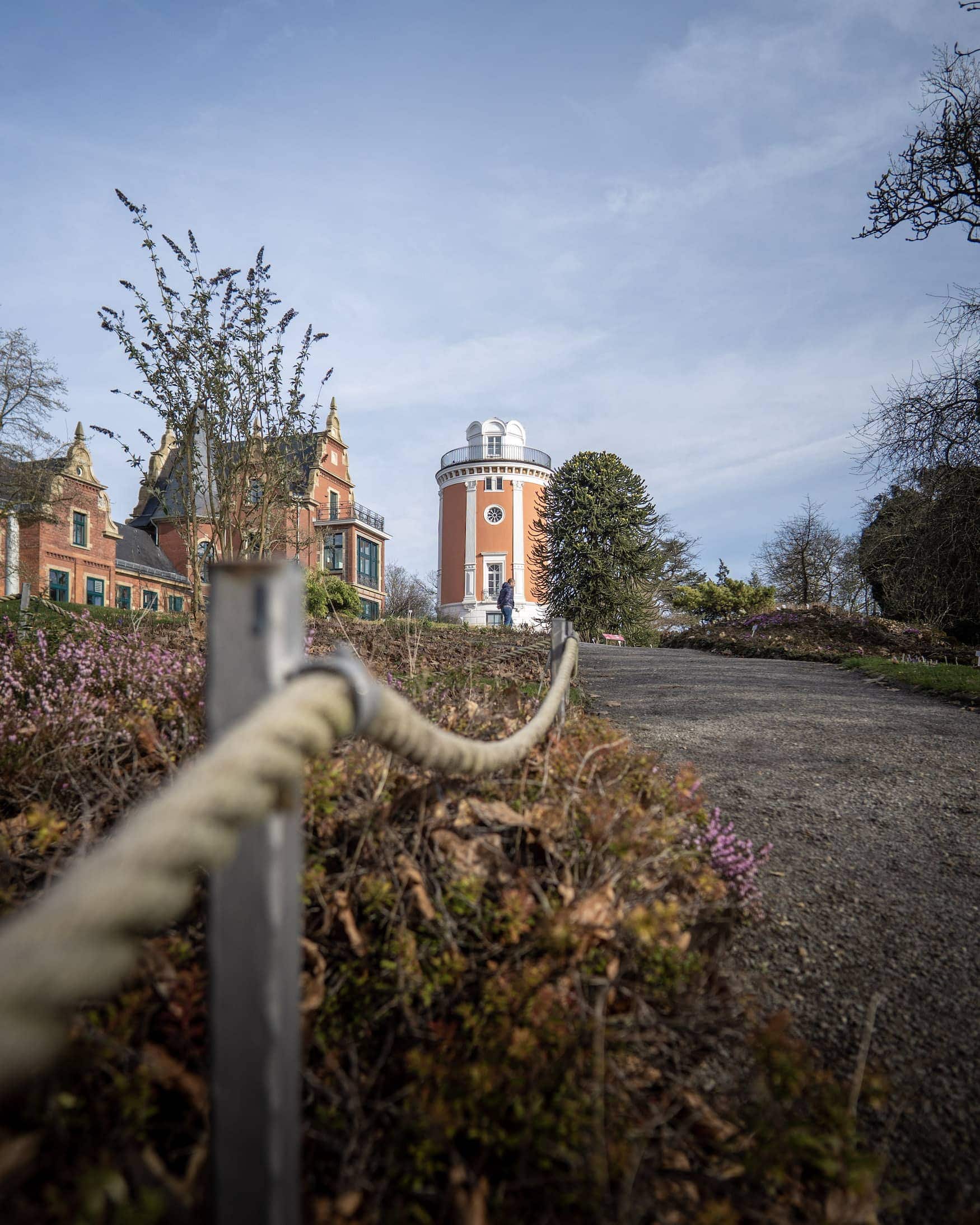
Bar hopping and strolling in the small old town – the Luisenviertel
From midday, the Luisenviertel around the street of the same name comes alive. In front of bars and cafés, there are tables on the cobblestones. The first strollers enjoy a coffee or a glass of white wine. Later, you can meet up in the countless restaurants such as Alaturka, Katzengold or 79°, and then perhaps stop off for a drink in one of the many hip bars. In the “Beatz & Cookies”, there are viewings of TATORT, Germany’s beloved tv-series every Sunday evening. in the “Zum Köhlerliesl” the notorious “cheesecake” schnapps and table football tournaments is always a must. The “Viertelbar” also awaits you with a cool interior. But the best drinks are served in the “Edelrost” bar.

Experience industrial culture – The Gaskassel
Wuppertal was once an up-and-coming industrial city when the social revolutionary, Friedrich Engels, took his hometown as a model for many of his theories. Some industrial buildings, such as the former Elba halls (everyone knows the black folders!) or the Bayer Works still characterize the cityscape today. Anyone who likes to walk in the footsteps of Wuppertal’s industrial culture should definitely visit the Gaskessel in Oberbarmen. Changing exhibitions and Europe’s largest 360-degree screen can be found in the former gas storage facility. The viewing platform offers a breathtaking view over the city.
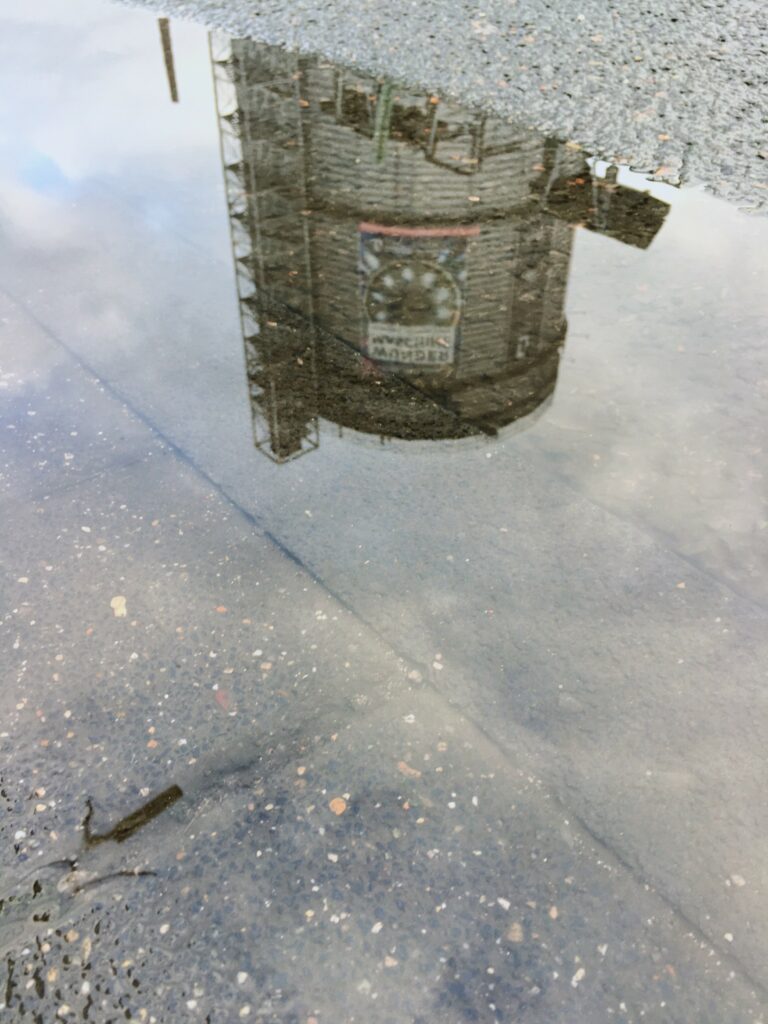
Floating through the valley – the suspension railway
Of course, no visit to the Bergisch city is complete without soaring over the Wupper with the suspension railway! This landmark of Wuppertal has been the fastest and most uncomplicated means of transport in the city since 1901. Almost twelve meters above the Wupper and later also above the street, you literally float through the valley and enjoy great views of the city. The suspension railway is as much a part of Wuppertal as the cathedral is of Cologne! Driving from Oberbarmen to Vohwinkel, past the stadium and over the autobahn, always with a view of the green slopes, is a must! The journey is exciting for visitors, even if the suspension railway is a completely normal means of transport for Wuppertal residents.
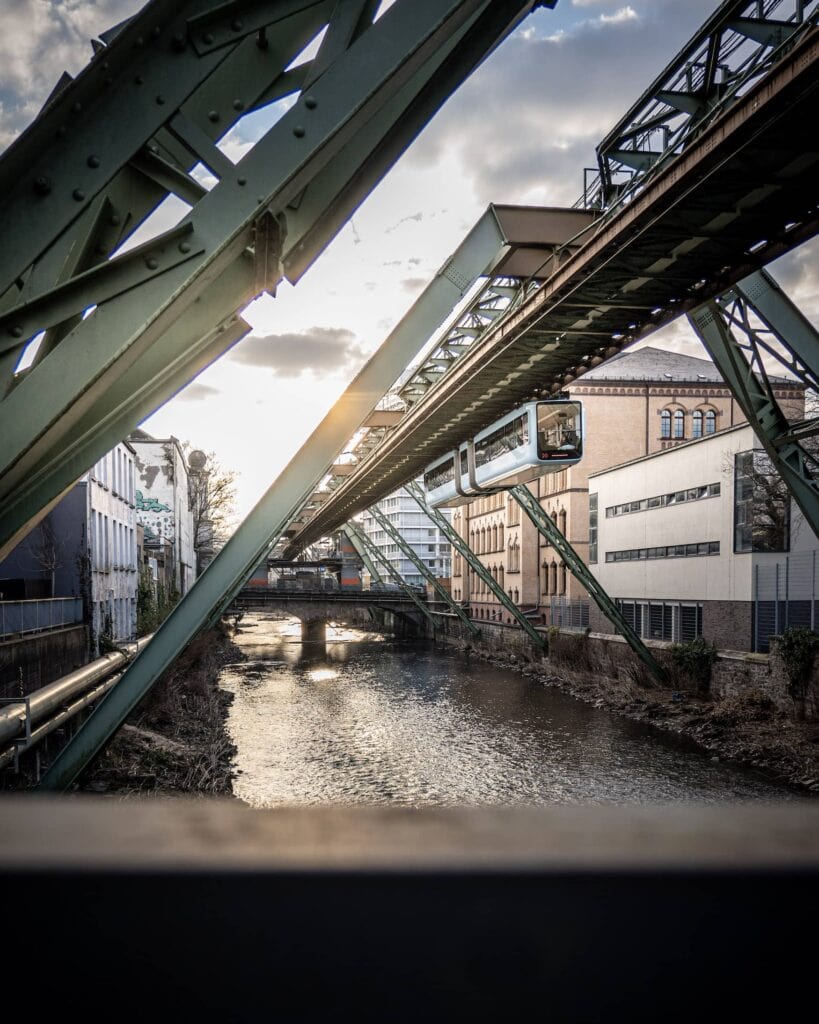
Cycle on old railway lines – Utopiastadt
A small railway once connected the various districts of Wuppertal. But now, thanks to a citizens’ initiative, various walking and bike routes lead through Wuppertal. The Nordbahntrasse runs almost entirely through the valley which is nice and flat and, of course, also with great views. Cafés, collectives and climbing gyms have settled in the old station buildings. In Utopiastadt at the former Mirker train station, you can not only relax in a hip atmosphere and be inspired by art and artists, you can also borrow bicycles there for free, with which you can cycle in a relaxed manner on the route across Wuppertal.
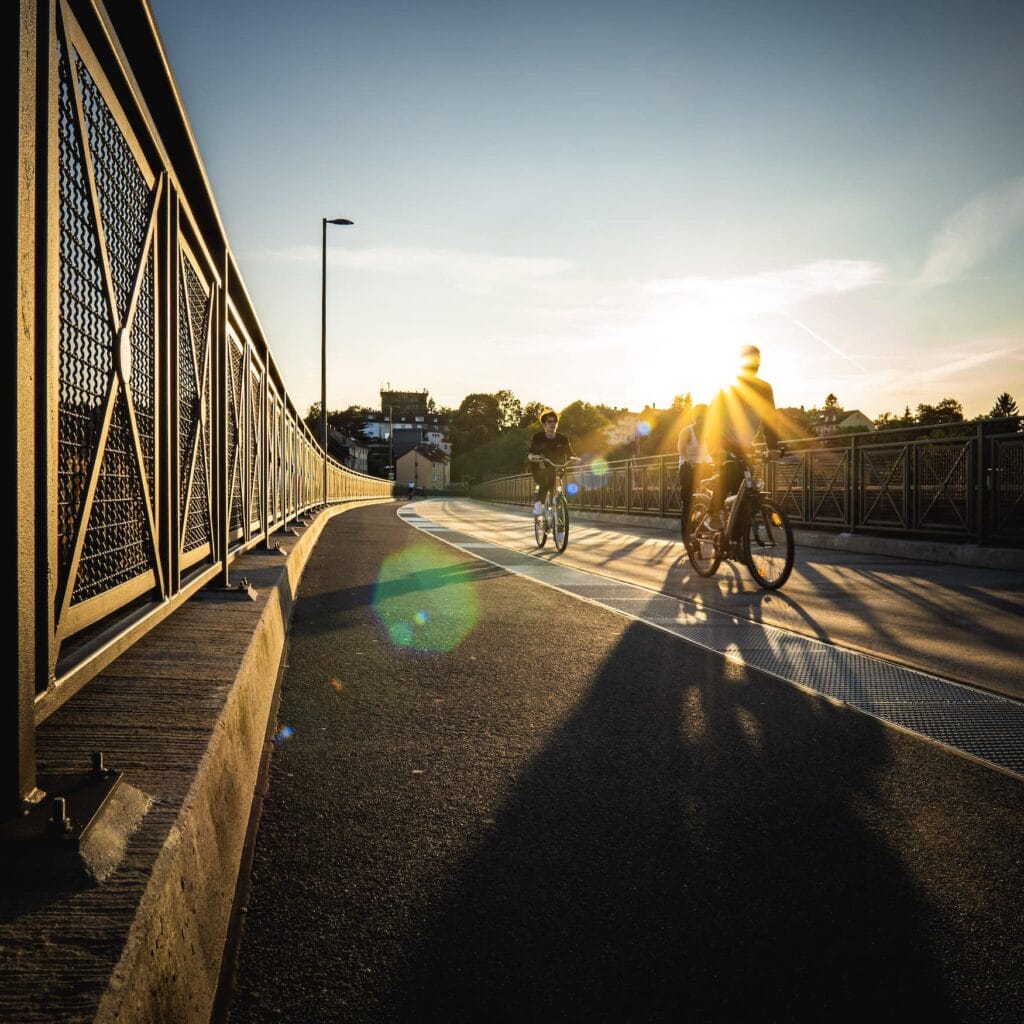
Admire the Wilhelminian style architecture – Ölberg, Briller Viertel or Arrenberg
It should be noted that Wuppertal has an amazing number of preserved Gründerzeit buildings. In the Briller district, visitors stroll through the largest contiguous villa district in Germany. On the Oil Mountain, which got its name because oil heating was still used there for a long time, one decorative facade follows the next. And on the Arrenberg, you can’t help but be amazed at the great house fronts!
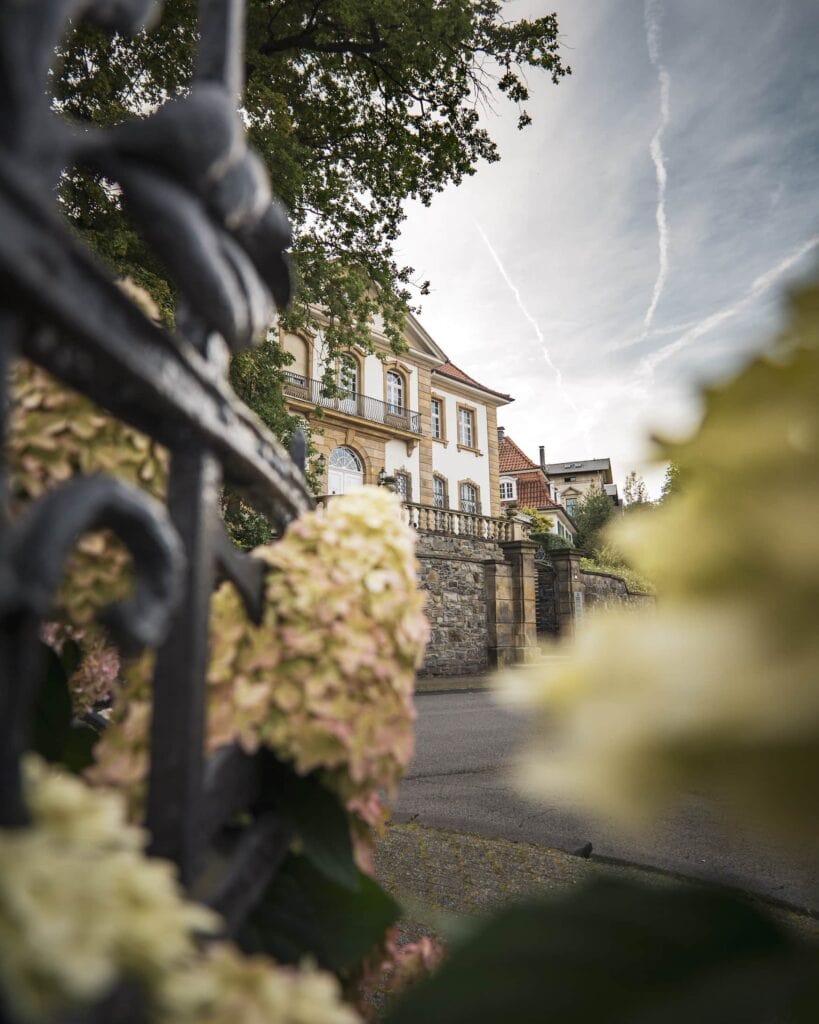
A trip into the countryside – Burgholz
Wuppertal is one of the greenest cities in Germany. In the middle of the city there are extensive forest areas, green spaces and many parks. The Burgholz, near Cronenberg is one such a green oasis: small streams flow through the dense forest, which always opens up into a beautiful clearing. Here, hiking trails lead through nature and promise a great day in the Bergisches Land – a half-timbered backdrop with many views and green hills included.
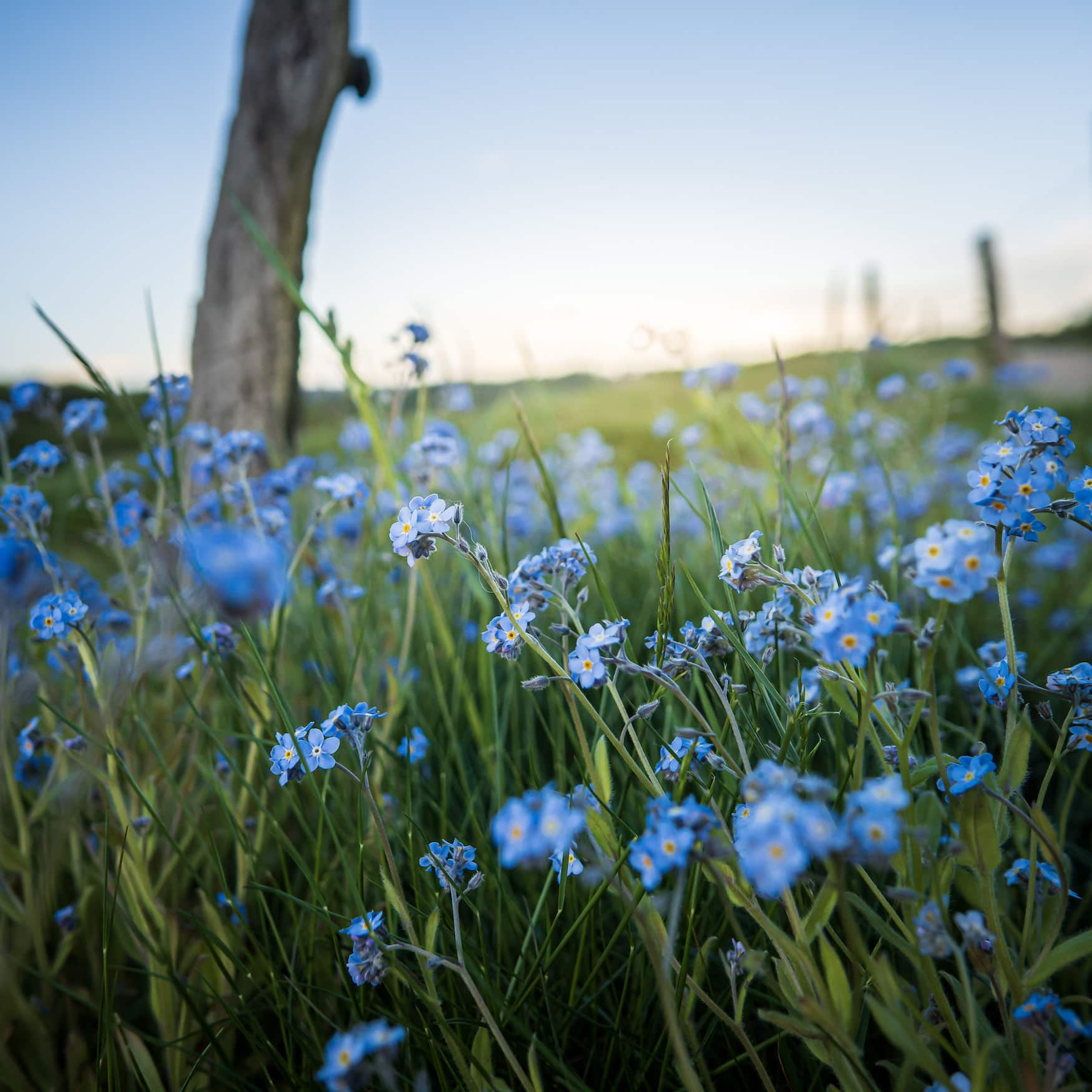

Celebrate in Germany’s most famous reggae club – U-Club
In the west of Wuppertal, hidden in a former bunker right on the banks of the Wupper, is one of the most well-known reggae clubs in Germany, the U-Club. Already used as a film backdrop – unmistakable by the gigantic antlers that tower over the dance floor – you can celebrate here with the most famous reggae artists from Jamaica and around the world in an exciting setting. Especially the Wuppertal DJs, Warrior Sound, ensure unforgettable nights in the U-Club Wuppertal.
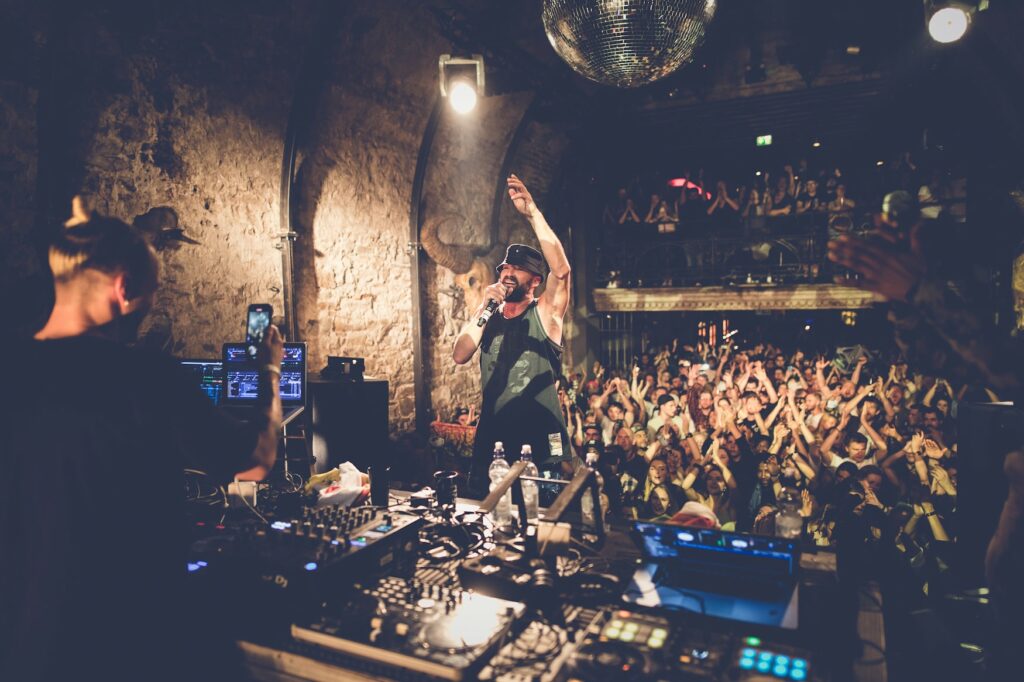
Sunset with student flair – The Wing Hill
Johannes Rau had to of course donate a university to his home town. The Bergische Universität is enthroned on the Grifflenberg where at night, it lights up as part of an art installation high above the city. In the evening, students meet here to have something to eat in the “pub” or to end the educational day on the so-called “wing hill” – recognizable by the gigantic wind turbines – with a magnificent sunset. As in many other places, the view over the city is phenomenal.
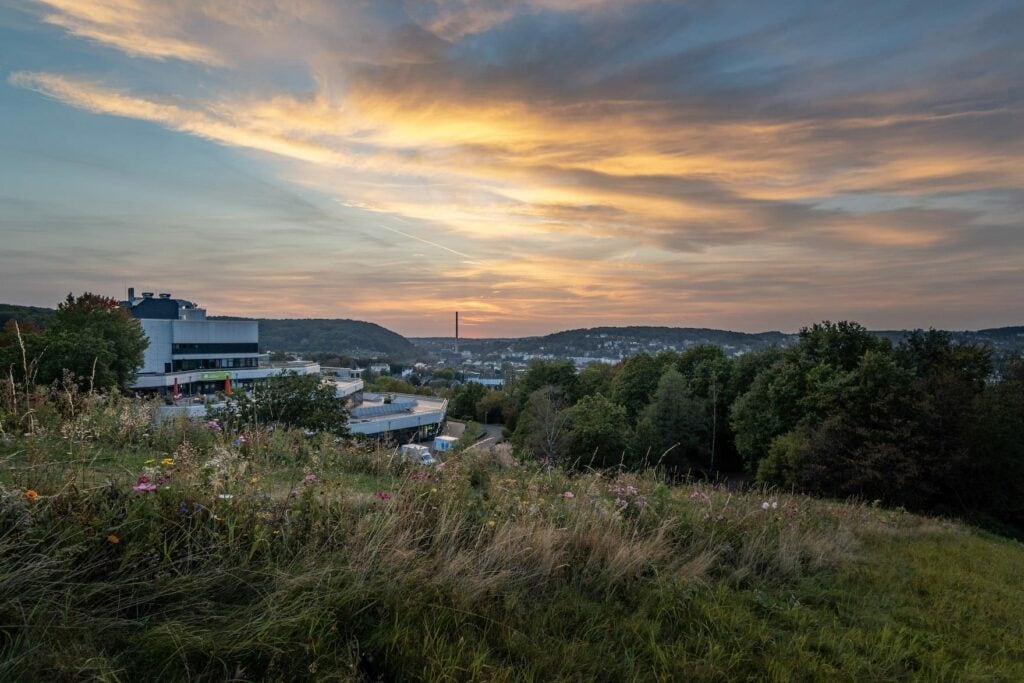
Experience culture – The Pina Bausch Dance Theater, Von der Heydt Museum and Sculpture Park Waldfrieden
Wuppertal is home to many great artists who actively shape their city. One of the best known was undoubtedly Pina Bausch, whose dance theater continues to have a lasting impact on the city. The British sculpture artist, Tony Cragg, opened the Waldfrieden Sculpture Park in his adopted homeland, which offers not only his own huge sculptures but also works by other artists in a green setting. Art lovers should definitely pay a visit to the Von der Heydt Museum, which mainly exhibits European art from the 19th century.


